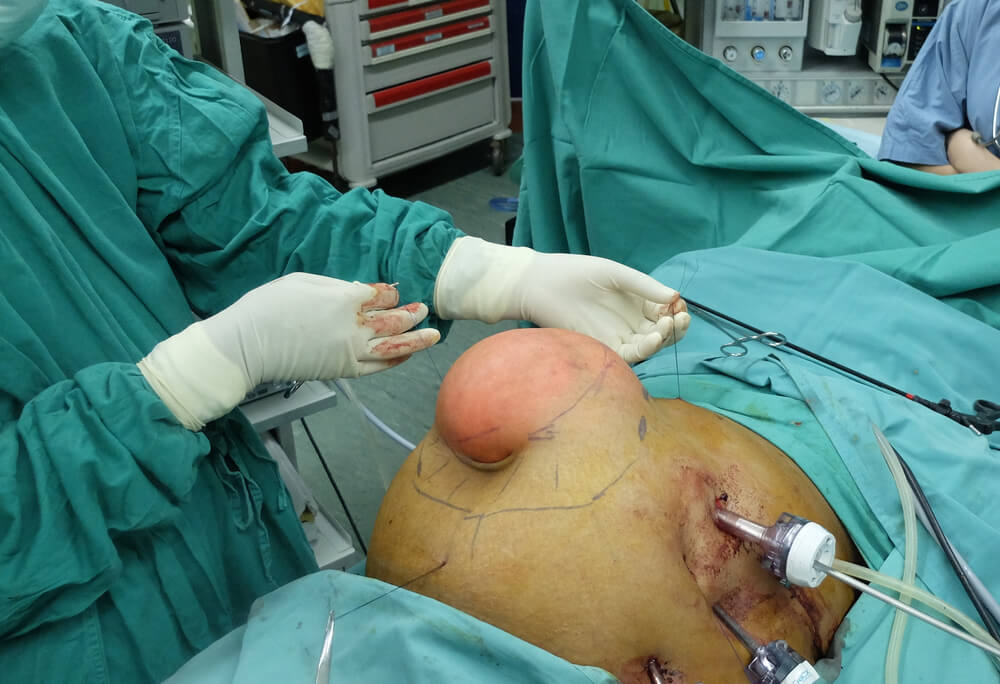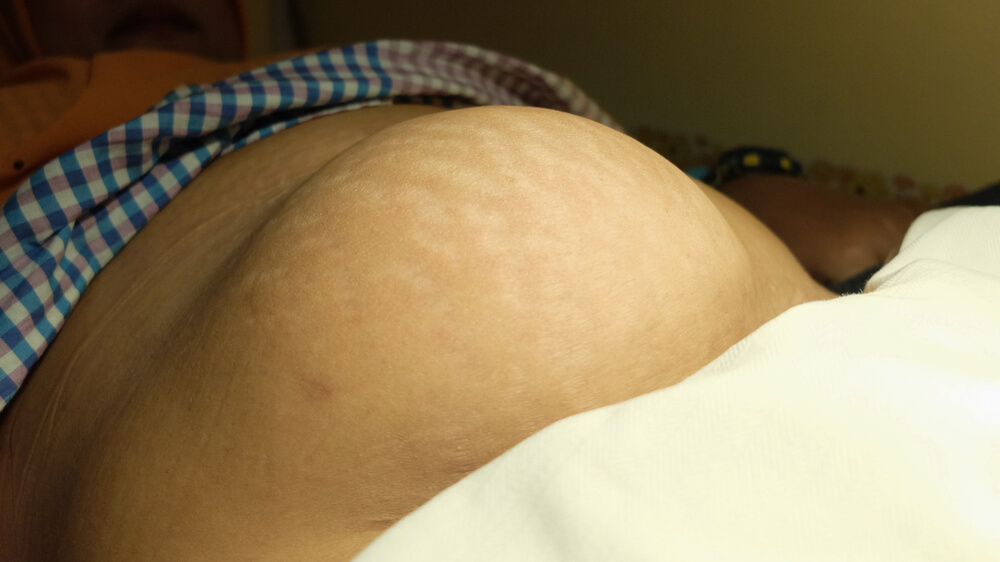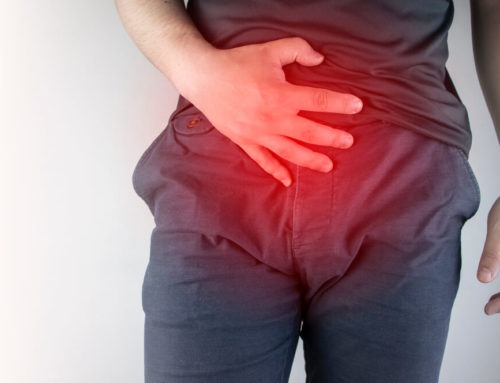A hernia is a common medical condition that can affect men and women of all ages. It’s caused by weakness in the abdominal wall that results in abdominal tissue or intestines pushing through and forming a bulge. When left untreated, a ventral hernia can become painful, uncomfortable, and even dangerous. Keep reading to learn more about this condition, including how medical professionals diagnose and treat hernias.
What Is a Ventral Hernia?
The term ventral refers to the location of a hernia at the vertical center of the abdominal wall. In other words, you will notice a ventral hernia at your belly button or vertically in line with your belly button. There are three main types of ventral hernias, and they get their names from the location where they occur.
- Umbilical hernia: This type occurs at the belly button area and is one of the most common hernias that people experience.
- Epigastric hernia: This hernia occurs anywhere from the belly button to just below the breastbone.
- Incisional hernia: As the name suggests, these hernias occur at the site of a previous incision. A significant number of patients who undergo abdominal surgery will later develop an incisional hernia.
Spotting a Hernia Bulge
The most obvious sign of a hernia is a visible bulge in the abdominal wall. In many cases, a patient will notice a small hernia bulge before they begin to experience any significant pain or discomfort in the area. The bulge may flatten out when the person lies down or disappear totally when the person pushes against it.
Sometimes, a hernia is so small in its early stage that it does not even form a noticeable bulge. The hernia may instead present as a small tender area on the abdomen. It is important to seek medical advice if you notice any hernia; even a small one could worsen significantly over time and lead to serious complications.
Without treatment, a hernia may start to form a larger bulge that is increasingly noticeable and painful. Eventually, the bulge will likely become a protrusion that no longer disappears easily into the abdominal wall. At this point, there is a danger of the bulge of the intestine becoming incarcerated.
An incarcerated hernia is a hernia that has become trapped, and it is then impossible to move back into place. When this happens, there is a further risk of the hernia becoming strangulated as blood flow from the intestines can no longer reach the area. A strangulated hernia is a medical emergency that requires immediate treatment.

Other Ventral Hernia Symptoms
Other symptoms of a ventral hernia include pain while going to the bathroom and constipation. A person with a hernia may also have pain and difficulty when they lift heavy objects or stand for long periods of time. A hernia bulge may protrude when a person coughs, sneezes, or moves in any other way that increases abdominal pressure.
In severe cases, intestinal blockages from a hernia can cause infections. If you have been experiencing symptoms such as nausea and vomiting, a doctor may conduct a blood test to determine whether you have an incarcerated hernia.
Risk Factors for Ventral Hernias
Hernias are the result of weakness in the abdominal wall, so understanding what causes abdominal weakness is key to understanding how hernias develop. First off, some people are born with weaker abdominal walls, which are inherently more prone to hernias. Other people strain their abdominal walls through conditions and develop weakness that makes them susceptible to hernias.
A prior abdominal surgery is one of the most common conditions that can lead to abdominal weakness and hernias. Many hernias occur right at the site of a previous surgery where scar tissue has weakened the abdominal wall. Incisional hernias occur in roughly one-third of patients who undergo abdominal surgery.
Other conditions that can cause abdominal weakness include pregnancy and weight gain. Both of these conditions cause the abdominal wall to stretch, which could cause it to become thin and weak. A woman who has undergone a C-section has the added risk factor of having a surgical scar on her abdomen.
People who have suffered from prolonged vomiting or coughing episodes can also be at risk for developing a hernia due to increased strain on the abdomen. Other conditions that can strain the abdomen include difficult bowel movements and breathing trouble. Loss of elasticity in the abdominal wall due to old age can also be a risk factor for a hernia.
Heavy lifting is another common cause of ventral hernias. Whether a person lifts weights at the gym or just moves heavy objects around the house, the increased strain can be too much for the abdomen to handle. Improper lifting techniques could aggravate the risk of hernia even more.
How Physicians Diagnose Ventral Hernias
When you go to the doctor concerned about a suspected hernia, the doctor will perform a physical exam and ask about your medical history and symptoms. If your hernia is not protruding all the time, the doctor may ask you to cough so that he or she can diagnose the hernia.
In some cases, medical professionals will order imaging tests to help diagnose a hernia, especially when a doctor suspects that the hernia has become incarcerated. Your doctor might order an MRI, a CT scan, or an ultrasound in order to pinpoint the location of a hernia and determine whether there is blockage going on.

Ventral Hernia Treatment
Unfortunately, ventral hernias cannot heal on their own. Surgery is necessary to repair the abdominal wall and ensure that the intestines do not become trapped and cut off from their blood supply. As hernias tend to worsen over time, delaying treatment usually makes the situation more complicated.
The good news is that modern surgical techniques have allowed hernia repairs to become much easier than they used to be. It is now possible to perform a laparoscopic hernia repair that is minimally invasive and has a relatively quick recovery time.
Laparoscopic surgery for hernia repair requires a small incision compared to the incision that surgeons would have used for open hernia surgery in the past. A patient who undergoes laparoscopic surgery will usually have a smaller scar and a faster healing time than an open-surgery patient. In many cases, a patient who has laparoscopic hernia repair can go back to their regular activities in as few as three weeks.
Ventral Hernia Repair
Because everyone has a unique medical history and anatomy, the same general type of hernia will present differently for each patient. Individualized care in hernia treatment is necessary to ensure that every patient gets the highest-quality care.
At Advanced Surgical Physicians, we enjoy getting to know each of our patients while we speak to them about what conditions led up to their injury. Although ventral hernias are unpleasant, they are nevertheless a common injury that so many people have experienced. If you learned something new or read something you could relate to in this blog, we’d love to hear about it in the comments. Visit us for your ventral hernia repair in Palm Beach County.







